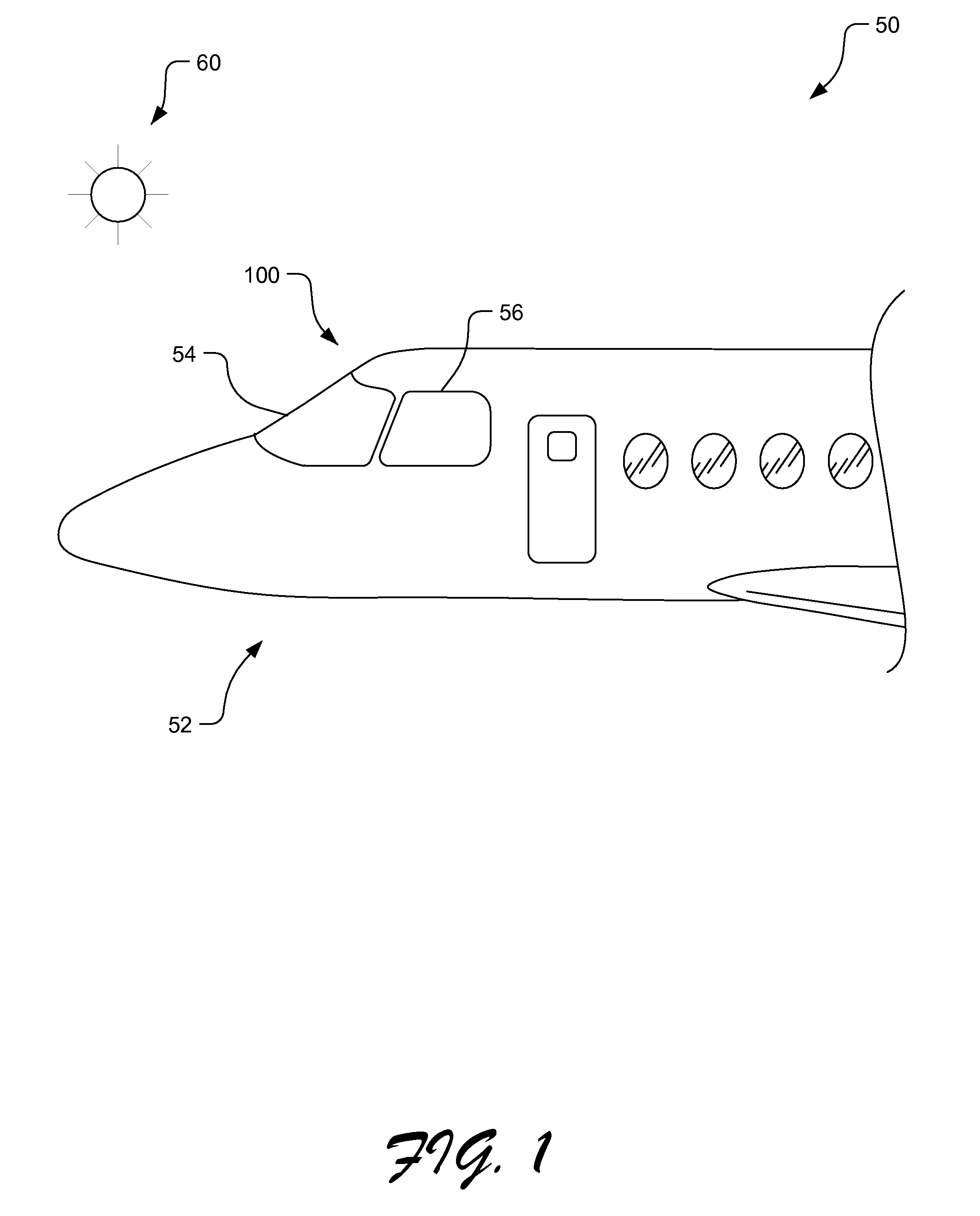Systems and methods for controlling windows with variable light transmission
a technology of variable light transmission and control system, applied in the direction of counting objects on conveyors, polarising elements, instruments, etc., can solve the problems of pilots and other personnel, limited conventional windows are quite noticeable, and the optimal is less than optimal, so as to reduce or eliminate one or more.
- Summary
- Abstract
- Description
- Claims
- Application Information
AI Technical Summary
Benefits of technology
Problems solved by technology
Method used
Image
Examples
Embodiment Construction
[0026]The present invention relates generally to windows with variable light transmission, and more specifically, to systems and methods for controlling windows with variable light transmission within a desired range. Specific details of certain embodiments of the invention are set forth in the following description and in FIGS. 1-13 to provide a thorough understanding of such embodiments. It will be appreciated, however, that the present invention may have additional embodiments, or may be practiced without one or more of the details described for any particularly-described embodiment.
[0027]Embodiments of systems and methods in accordance with the present invention may provide considerable advantages over the prior art. For example, in a situation where there is too much light reaching a pilot's eyes, embodiments of the invention may replace or augment hats, visors, and sunglasses, prevent or reduce squinting, and reduce the risk of loss of visual acuity. Where the light intensity ...
PUM
 Login to View More
Login to View More Abstract
Description
Claims
Application Information
 Login to View More
Login to View More - R&D Engineer
- R&D Manager
- IP Professional
- Industry Leading Data Capabilities
- Powerful AI technology
- Patent DNA Extraction
Browse by: Latest US Patents, China's latest patents, Technical Efficacy Thesaurus, Application Domain, Technology Topic, Popular Technical Reports.
© 2024 PatSnap. All rights reserved.Legal|Privacy policy|Modern Slavery Act Transparency Statement|Sitemap|About US| Contact US: help@patsnap.com










